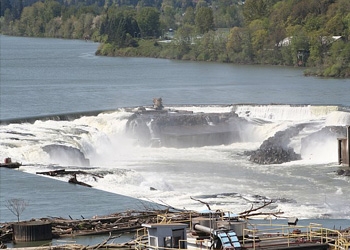The U.S. Geological Survey selected the Willamette River Basin in the Pacific Northwest as the latest location for an in-depth examination of factors affecting water supply and demand.
The Willamette River Basin is the fourth in a series of at least ten Integrated Water Science basin studies planned by USGS nationwide. Nested between Oregon’s Coast and Cascades Ranges, the river flows north through a fertile agricultural valley that is also home to two-thirds of Oregon’s population.
The basin was chosen because its hydrologic and environmental setting is representative of the challenges faced by conflicting water demands between humans and ecosystems—particularly salmon—throughout the entire Pacific Northwest.
“The integrated nature of river health and real-world water management is well represented by the Willamette River Basin. It supports major cities, fertile agriculture, and ecologically important species such as salmon, making it an ideal location to develop better science for future decisions that will affect both the environment and peoples of the region,” said Tanya Trujillo, Interior Assistant Secretary for Water and Science.
The USGS Integrated Water Science Basin studies date back to the 2009 SECURE Water Act, which directed the USGS to establish a national water availability assessment. Each Integrated Water Science basin is selected to represent a wide range of environmental, hydrologic, and landscape settings and human stressors of water resources to improve understanding of water availability across the nation.
The other three basins studied to date include the Delaware River Basin, the Upper Colorado River Basin, and the Illinois River Basin.
The USGS will use regionally focused innovative data collection, research, and modeling, such as the Next Generation Water Observing System (NGWOS), to provide high-fidelity, real-time data on water quantity, quality, and use. An Integrated Water Availability Assessment (IWAA) will provide a near-real-time census of the status, trends and forecasts of the amount of surface water and groundwater available to support various uses in the basin.
The USGS chose the Willamette River Basin based on a rigorous quantitative ranking that indicated it would be ideal for advancing the science used to manage the amount and quality of available water to diverse needs. The basin’s wide array of landscapes run the gamut from rural to urban, from forested to farmed. It is fed by diverse stream types, supporting varied aquatic ecosystems which are home to threatened and endangered species.
In particular, the studies will focus on applied science that can help balance human needs for water management such as flood control, water supply, recreation with the need to maintain ecological sustainability.
“Integration of USGS monitoring, research, and modeling in the Willamette River Basin will support innovation around issues that are common to many river systems of the Pacific Northwest. For example, we expect to it to bolster our scientific understanding of seasonal variation in precipitation, groundwater-surface water interactions, snowpack influence on summer low flows, watershed response to severe fire, and harmful algal bloom prediction,” said Don Cline, USGS Associate Director for Water.
USGS will begin evaluating existing knowledge gaps and consulting stakeholders in the spring of 2022. For more information about Integrated Water Science Basins, visit: https://www.usgs.gov/mission-areas/water-resources/science/integrated-water-science-iws-basins

